Travel to China
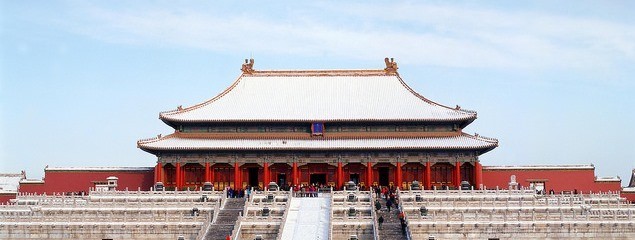
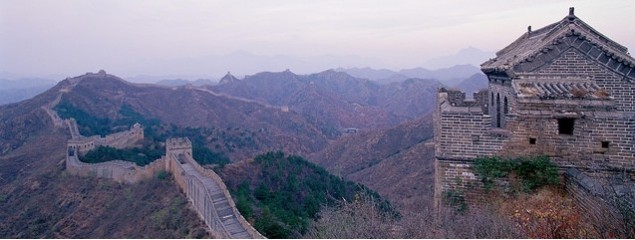
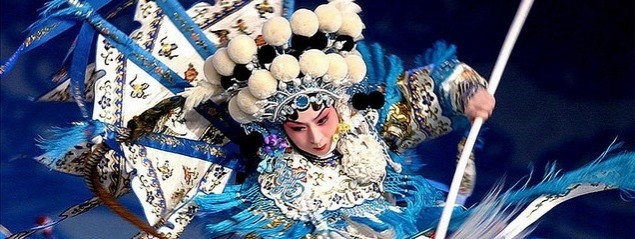
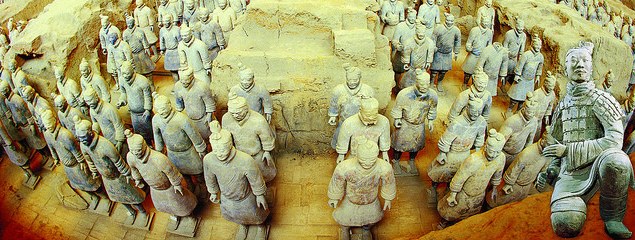
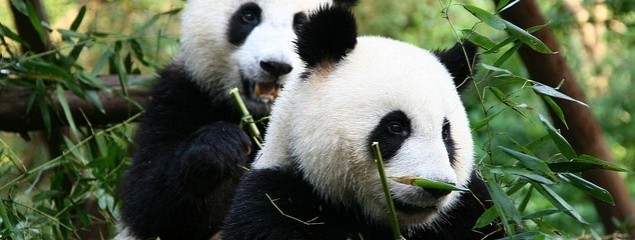
China is so vast, and has such diversity of terrain and culture that it is impossible to see all the many highlights in one trip. While this might seem a bit disappointing at the outset, once you fall under China’s spell, planning a repeat trip will be a pleasure.
Beijing, the capital for over 3,000 years, is China’s premier tourist destination. Its the city to visit to see many icons. The architectural masterpiece of the Forbidden City, the equally impressive Summer Palace, Tiananmen Square, the Ming Tombs, the Temple of Heaven… and of course, the most famous of all — The Great Wall of China - one of the most visited sites in all the world.
Shanghai The fastest growing city in China is also its most cosmopolitan, offering visitors a chance to experience the past, present, and future simultaneously. Shanghai straddles the Huangpu River and is divided into two districts: modernistic Pudong on one side of the river and the more historical Puxi on the other. The Pudong skyline features the impossible to miss Pearl TV and Radio Tower. On the Puxi side, you can stroll the elegant Bund riverside district to get a taste of old Shanghai.
Xi’an - a walled city which retains much of its original charm. Once an ancient capital on the Silk Road, and is now considered the starting point for travelers who wish to follow the Road. Xi’ans best known antiquities are the 7,000 terracotta statues of warriors and soldiers dating from 210 BC. The first warriors were discovered by a farmer in 1974 and more are being excavated. Don’t miss the Shaanxi History Museum, and, for shoppers, the bustling Muslim district, .
Guilin Picturesque limestone karsts beckon tourists from around the world to this small city. Popular sights include Seven Star Park, Reed Flute Cave, 200-foot high Fubo Hill and the much-loved Elephant Trunk Hill. Guilin is very popular as a starting point for Li River cruises to Yangshuo, and for visits to the nearby minority villages of Yao, Miao and Dong.
Chengdu The Giant Panda reserve is the big attraction in Chengdu. Perched in a high mountain valley, Huanglong or Yellow Dragon National Park offers numerous adventure options. Trekkers can hike to Lhasa, go whitewater rafting or embark on extended river journeys.
Yangtze River Winding about 3,964 miles, the Yangtze River is the largest river in China and the third largest in the world. It traverses eleven provinces before pouring into the East China Sea at Shanghai. The Yangtze is historically, economically and culturally important. Yangtze River Cruises generally run between Chongqing and Yichang, traversing the Three Gorges Dam, the largest dam project and hydro-electric power station in the world.
Dunhuang - on the edge of the Gobi desert, was once a fort on the Silk Road, but is famous today for the more than 400 Mogao caves boasting a wealth of statuary and frescoes.
Lhasa Lhasa is a jewel of a destination. Potala Palace, the former residence of the Dalai Lama, is a major attraction. Sera Monastery with its collection of murals is not to be missed. You’ll also find numerous important temples such as the Jokhang Temple, Tibets Holiest site, and even the world’s highest brewery.
China is vast. Known as the Middle Kingdom by the ancient Chinese, China is the 3rd largest country in the world. It is surrounded by 14 other nations and has 5 different time zones. With three major regions, China stretches from the mountainous west, to the desert plains of the Mongol Plateau to Manchuria in the northeast. The largely low-lying eastern region consists of the valleys and floodplains of the Yangtze and Yellow Rivers, through to the coastal plains of the Pearl River in the south.
People
China is the worlds most populous country with 1.35 billion people. China officially recognizes 56 distinct ethnic groups, the largest of which are the Han Chinese, who constitute about 91.51% of the total population.
Language
Mandarin is spoken by 70% of the population, but there are as many as 292 living languages in China. English is widely spoken in major cities, especially by younger people, but is not generally understood in rural areas.
History
10,000-2,000 BCE Neolithic Cultures
ca. 2100-1600 BCE Xia (Hsia) Dynasty
ca. 1600-1050 BCE Shang Dynasty
One of the Three Dynasties, or San Dai (Xia, Shang, and Zhou), thought to mark the beginning of Chinese civilization: characterized by its writing system, practice of divination, walled cities, bronze technology, and use of horse-drawn chariots.
ca. 1046-256 BCE Zhou (Chou) Dynasty: Western Zhou (ca. 1046-771 BCE), Eastern Zhou (771-256 BCE)
A hierarchical political and social system with the Zhou royal house at its apex: power was bestowed upon aristocratic families as lords of their domains or principalities. Although often compared to European “feudalism,” what actually gave the system cohesion was a hierarchical order of ancestral cults. The system eventually broke down into a competition for power between rival semi-autonomous states in what became known as the Spring and Autumn period (ca. 770-475 BCE) and the Warring States (ca. 475-221 BCE) period. It was during these tumultuous times that Confucius (551-479 BCE) lived.
221-206 BCE Qin (Ch’in) Dynasty
Created a unitary state by imposing a centralized administration and by standardizing the writing script, weights and measures. Known for its harsh methods of rule, including the suppression of dissenting thought.
206 BCE-220 CE Han Dynasty: Western/Former Han (206 BCE-9 CE) and Eastern/Later Han (25-220 CE)
Modified and consolidated the foundation of the imperial order. Confucianism was established as orthodoxy and open civil service examinations were introduced. Han power reached Korea and Vietnam. Records of the Historian, which became the model for subsequent official histories, was completed.
220-589 CE “Period of Disunity” or Six Dynasties Period
The empire was fragmented. The North was dominated by invaders from the borderland and the steppes. The South was ruled by successive “Chinese” dynasties. Buddhism spread.
581-618 CE Sui Dynasty
China reunified.
618-906 Tang (T’ang) Dynasty
A time of cosmopolitanism and cultural flowering occurred. This period was the height of Buddhist influence in China until its repression around 845. Active territorial expansion until defeated by the Arabs at Talas in 751.
960-1279 Song (Sung) Dynasty: Northern Song (960-1127) and Southern Song (1127-1279)
An era of significant economic and social changes: the monetization of the economy; growth in commerce and maritime trade; urban expansion and technological innovations. The examination system for bureaucratic recruitment of neo-Confucianism was to provide the intellectual underpinning for the political and social order of the late imperial period.
1279-1368 Yuan Dynasty
Founded by the Mongols as part of their conquest of much of the world. Beijing was made the capital. Dramas, such as the famous Story of the Western Wing, flourished.
1368-1644 Ming Dynasty
The first Ming emperor, Hongwu, laid the basis of an authoritarian political culture. Despite early expansion, it was an inward-looking state with an emphasis on its agrarian base. Gradual burgeoning of the commercial sector; important changes in the economy and social relations in the latter part of the dynasty; also a vibrant literary scene as represented by publication of the novel Journey to the West.
1644-1912 Qing (Ch’ing) Dynasty
A Manchu dynasty. Continued the economic developments of the late Ming, leading to prosperity but also complacency and a dramatic increase in population. The acclaimed novel Dream of the Red Chamber was written in this period. Strains on the polity were intensified by a rapid incorporation of substantial new territories. Its authoritarian structure was subsequently unable to meet the military and cultural challenge of an expansive West.
1912-1949 Republic Period
Weak central government following the collapse of the dynastic system in 1911-12; Western influence was shown by the promotion of “science” and “democracy” during the New Culture Movement. The attempt of the Nationalist government (est. 1928) to bring the entire country under its control was thwarted by both domestic revolts and the Japanese occupation (1937-45). The Nationalists fled to Taiwan after defeat by the Communists.
1949-present People’s Republic of China
Communist government. The drive for remaking society ended in disasters such as the Great Leap Forward and the Cultural Revolution. Economic reform and political retrenchment since around 1978.
Currency
The renminbi is the official currency of the People’s Republic of China. The yuan (sign: ¥) is the basic unit of the renminbi, but is also used to refer to the Chinese currency generally. One yuan is subdivided into 10 ji, and a ji in turn is subdivided into 10 fēn.
Best Time to Travel
The most comfortable seasons of the year are early autumn, September to early October, and spring, late March through May. During these periods, temperatures are about 50-70 F throughout China with a limited amount of rain. Summer (from June to the end of August) can be extremely hot with temperatures well above 80F. Summer is also the rainy season.
Health Requirements
No shots are required for US visitors entering China. Malaria is present in some areas of China. Please check with your travel clinic for their recommendation based on your personal health history.
Visa Requirements
You must apply for a Chinese visa prior to arrival in China. It is possible that your itinerary will require you to get a multiple entry visa. Please contact the Embassy of China for further information www.china-embassy.org/eng/visas
Tipping & Porterage
Tipping is expected and appreciated. Asia Answers supplies Tipping Guidelines with your trip packet.
Credit Cards
Visa and Mastercard are accepted at hotels and ATMs, American Express less so. Cash is needed for shopping at street markets and for meals purchased in restaurants.
Electrical Appliances
China operates on 240 volts and the plug type is I. For information on plugs and voltage, please visit http://www.worldstandards.eu/electricity/plugs-and-sockets
Water
Bottled water is advised, and is inexpensive and widely available.
Related Destinations
Bali & Indonesia
{markers}
Bhutan
{/markers}
Cambodia
China
Hong Kong & Macau
India
Japan
Laos
Malaysia
{markers}
Maldives
{/markers}
{markers}
Nepal
{/markers}
Northern India
Philippines
Singapore
South Korea
Southern India
{markers}
Sri Lanka
{/markers}
Taiwan
Thailand
{markers}
Turkey
{/markers}
{markers}
Vietnam
{/markers}
Explore the rest of our China destinations:
Build your own custom brochure
Finally, information the way you want it, when you want. Create your own customized information brochure from anything on our site with this magical tool called a brochure builder. Add destination information, hotels, resort and lodges and even vacations that you are interested in. Simply find a product you are interested in, and click to add to your brochure.
Once you have finalized your selection, press select and your own customized brochure will be created, filled with all sorts of hints and tips to get you started. What a great way to get your friends and family interested in a trip, or perhaps to surprise your husband or wife with, or even to just have a memory of your own vacation?
The selection on this website is just a small showcase of the offerings available, ask the travel experts for more details. We're here to inspire!








Follow Us